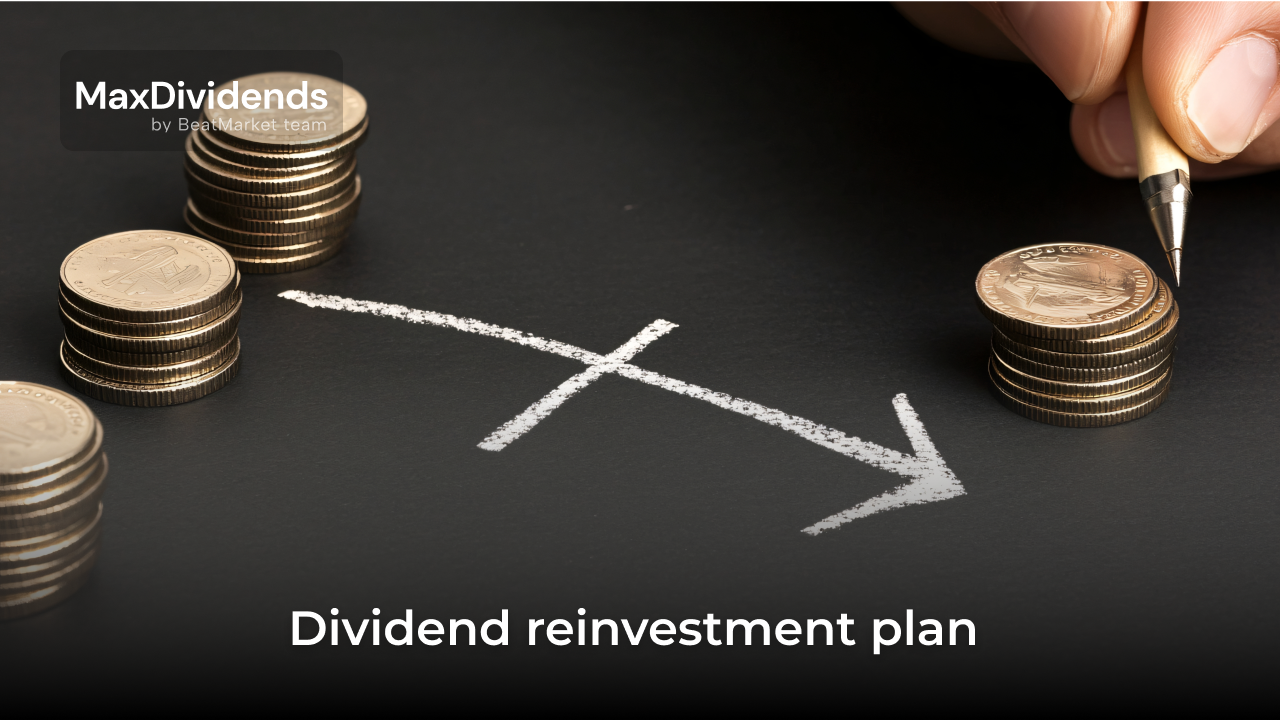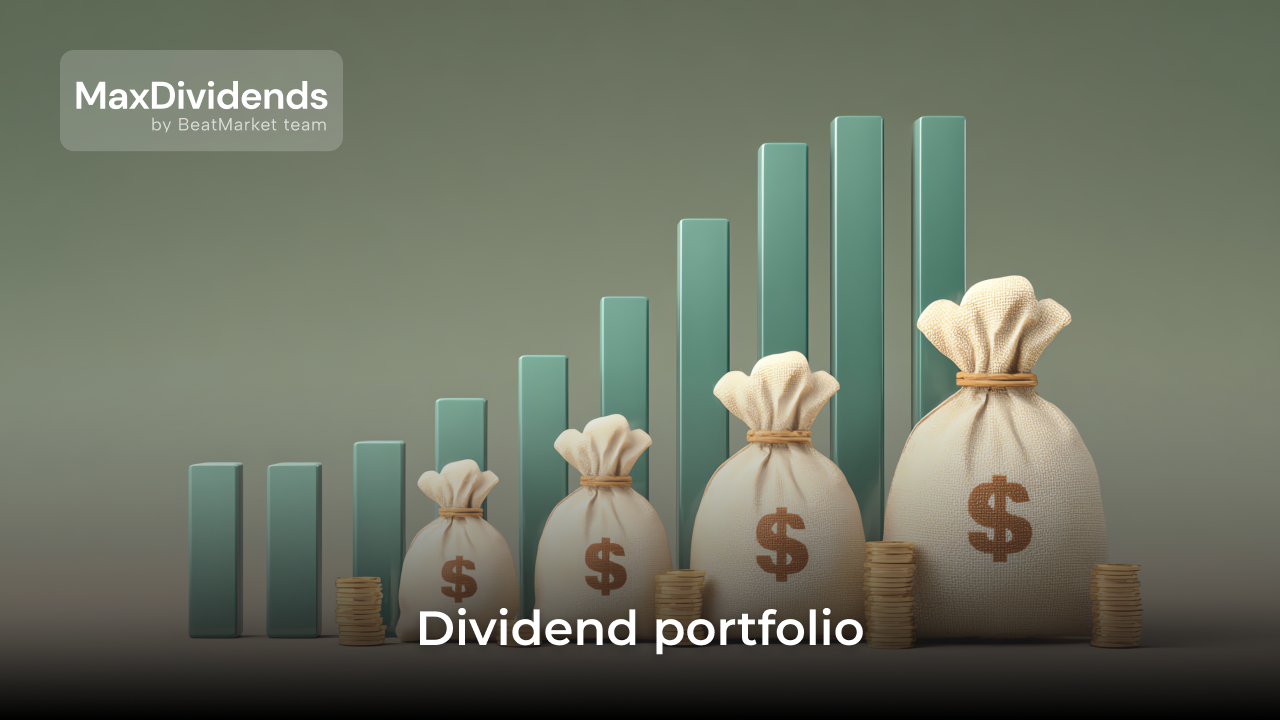Here are some tips on how to begin investing in stocks. They include advice on selecting individual securities and also look at the nuances that need to be taken into account before you start investing in the stock market. The main ones are choosing your investment style, type of brokerage account, setting a goal and developing financial discipline.
Table of Contents
Steps Before Get Started
Below is a brief guide on how to start investing in the stock market. It covers the basic steps necessary to buy a stock, otherwise you are unlikely to get a positive result.
1. Define Your Tolerance for Risk
Investing always involves risk. Stocks are a volatile asset, their quotes can fall by 30-50% or more in the case of a stock market crisis.
And yet, if one uses a long-term strategy with no borrowing, this loss remains a paper loss. In fact, an investor will only lose money if he sells his stocks cheaper than he bought them.
Risk tolerance is the level of risk that a person is psychologically comfortable with. It means that he or she is ready to see such a drawdown in the account and will be able to continue to follow his or her investing strategy at that particular moment.
The broad market will nearly always demonstrate growth at the end of a long period of time, but the same cannot be said for individual stocks. Therefore, the investor’s real ability to tolerate risk without compromising the bottom line should also be taken into account.
This factor depends on the time available to achieve the result and one’s personal finances. The more capital one has, the more risky investments one can afford.
2. Decide on Your Investment Goals
The first step in stock investing for beginners is to determine your objective. It largely decides the investment horizon, the ability to tolerate risk, and the preferred asset classes.
Examples of investing goals:
- save for major expenses (a down payment on a house or children’s education);
- create a stable passive income;
- build up a retirement capital.
Everyone’s goals change over time. Therefore, it is important to review them regularly, and to make sure that the chosen strategy is working towards them.
3. Determine Your Investing Style
There are several investing styles:
- A completely independent approach, when an investor looks for the right stocks to buy on his/her own. Here, he or she can use not only his or her own knowledge, but also the advice provided by a broker, for instance.
- Consulting a financial advisor, who builds a diversified portfolio and manages it later on.
- Using a robo-advisor. This is a computer programme intended to create an asset allocation based on an investor’s stated goals and risk tolerance. Major brokerage firms offer software that provides automatic portfolio rebalancing and tax optimisation.
When choosing the right style, you should take into account the knowledge you have, the time available and, most importantly, your interest in the subject. The advantage of the latter option is that the cost of using robo-advisors is much lower than that of a financial expert. They are therefore affordable even for people with little capital.
4. Choose Your Investment Account
There are many types of investing accounts. Most of them allow you to get a tax break. Still, these accounts are target accounts and limit a person’s ability to use the money he or she has saved.
Examples of investing accounts with tax credits:
- Traditional 401(k) or Individual Retirement Account (IRA). The money credited to such an account is tax-free. Tax must be paid on the investment income only when the account is closed.
- Roth 401 (k) or Roth IRA. This type of retirement plan allows you to pay no tax on income earned through investments.
- 529 plan. Intended for saving for children’s education. The amount contributed is free of tax.
- HSA – Health Savings Account.
The main disadvantages of such programmes are the limitations on the amount to be deposited per year and possible penalties for early withdrawal.
Alternatively, a standard taxable investment account can be used. It does not entitle the investor to any benefits, but there are no restrictions on the assets available and the investor is free to manage his or her money and withdraw it at any time.
A standard brokerage account can be managed independently or with the help of a robo-advisor or a financial planner. In an employer retirement plan, an investor is likely to be limited to investing in mutual funds.
5. Learn to Diversify and Reduce Risk
Diversification is the allocation of capital to different asset classes and to different issuers’ securities within the same asset class.
The main purpose of such a move is to reduce the risk of losing money. For example, an investor who has invested all of his money in one company will lose all of his capital in case this company goes bankrupt.
If 1 company out of 10 in a portfolio goes bankrupt, losses reach 10%. It is possible that growth in other stocks will compensate for it. And it is highly unlikely that long-term issues will arise in all of the selected companies at once.
Portfolio investment theory helps to allocate capital correctly. This helps an investor select assets in such a way as to maximize returns for a given level of risk. Or, otherwise, to reduce risk to the possible minimum while maintaining the required return.
An example of the simplest and most popular portfolio is the 60/40 strategy. In this strategy, 60% of capital is invested in stock index funds and the rest is in bond funds.
6. Learn the difference between investing in stocks and funds
There are two ways to make money on the exchange:
- build your portfolio of individual stocks;
- invest money in stock mutual funds or exchange traded funds (ETFs).
Each of these approaches has advantages and disadvantages. These are listed in the table below.
| Individual stocks | Mutual funds/ETF | |
| Advantages | Opportunity to make profits exceeding the broad market growth with the right choice of company | Simplicity of diversification.Convenience for passive investors |
| Disadvantages | It takes a lot of time to choose a company and study the issuers’ reports.It is more difficult to build a diversified portfolio with little capital | Lower potential returns. If a fund copies an index, its net worth will be made up of a variety of companies, including those with struggling businesses.Management fees that reduce the total return |
All existing funds can be divided into actively managed funds and passive ones. The objective of the former is to outpace the growth rate of the broad market and obtain higher returns by constantly searching for the most promising stocks. The latter try to replicate a given index as closely as possible.
1. Decide how you want to invest in the stock market
The first thing an investor should do is think through his or her strategy. It can be:
- active or passive;
- independent or involving experts;
- Long term or aimed at solving life’s current problems;
- aimed at increasing capital or creating passive income.
Most beginners seek to increase their profits through active trading. But statistics indicate that over a long investment horizon, the passive “buy and hold” strategy is more likely to be successful.
In any case, an investor should make a decision in advance and choose a broker based on one’s strategy. For example, some companies set a minimum commission per transaction, which may be disadvantageous to someone who wants to trade small amounts frequently. Others may charge additional fees for inactivity or for a deposit less than a set threshold.
Most people have to strive for several financial goals at once. For example, this could be both building up retirement savings and buying a house. In that case, you need to have several accounts. You may also ask for the help of an investment advisor to allocate your assets between them. Automated robo advisors are more suitable for those with a single objective.
For example, if a person is keen to build up as much retirement capital as possible and is ready to take risks, he or she will be advised to invest in the most promising growth stocks. On the other hand, if an investor wishes to have a stable passive income now, they will be offered companies from a list of dividend aristocrats, bonds and other fixed income investments.
Whichever strategy an investor chooses, it is possible to test its effectiveness with stock market simulators first before investing real money. These are programs that allow you to make virtual trades. One of their tasks is to help a beginner understand how different asset classes work.
2. Open an investment account
The preferred investment account type is largely influenced by your financial goal. And the investing style chosen is a key criterion when choosing a broker.
If you want to manage your own money
In such a case, the best solution is to contact an online broker. These companies offer more favorable terms than traditional ones.
Popular brokers are:
- TD Ameritrade;
- Interactive Brokers;
- Tastytrade etc.
Most online brokers provide access not only to trade individual stocks and ETFs, but also to options and stock futures.
If you want a pro to manage your money
The typical solution in such a case is to contact a financial advisor. The advantage of this is that the expert can take into account all the subtleties of the client’s individual situation and offer a comprehensive approach to his or her investment objectives.
But working with a human financial advisor also has a number of disadvantages:
- cost of services (1% of assets under management per year or more);
- high minimum client deposit requirements;
- risk of a potential conflict of interest if the chosen advisor works with any mutual funds and receives a fee for selling their securities.
Today’s financial industry offers many solutions that are available to people who are at the very beginning of the capital formation journey. Some examples are BeatMarket Scoring and BeatMarket Guru.
The former is a ranking of companies with stocks recommended for purchase. Based on a number of criteria, undervalued stocks are selected as they are able to show growth in the near future and become a good long term investment. Investments in companies selected by BeatMarket Scoring also help increase the dividend yield of a portfolio.
The BeatMarket Guru service allows you to generate a balanced equity portfolio in a few clicks. It is suitable for investors with any budget.
Both systems work for the US market and for other countries.
Minimums to Open an Account
Most online brokers do not impose a minimum deposit requirement to open an account for an investor to trade on his or her own.
Financial institutions that offer a wide range of services, including portfolio management, are more likely to face a minimum deposit limit. The threshold may be $50,000 to $100,000 or more.
Some brokers do not regulate the minimum deposit size, but offer more attractive terms to clients whose portfolio value exceeds a certain amount.
Commissions and Fees
All brokers operating in the US market can be divided into 2 types:
- with a full range of services;
- with a discount.
Full service brokers offer not only access to transactions but also help with property management, tax optimisation, etc. Their commissions are the highest on the market. They can be 1-2% of the transaction value or fixed (e.g. $10 per application fee). In addition, extra fees may be charged (for account management, etc.).
Discount brokers offer a much smaller range of services, do not provide investment advice etc. This has a positive effect on the commission rate.
The lowest costs are incurred by investors who work with online brokers. Due to the high competitiveness of the market, there are enough companies that have completely abandoned commissions for stock transactions. Their earnings are limited to commissions for derivative transactions, profits from customers’ lending, etc.
Investors buying stocks of mutual funds rather than individual companies run the risk of incurring additional costs. This is the so-called initial and final load – the mark-up on the units’ value, which is the remuneration of the dealer and the management company.
These commissions are deducted from the investor’s account at the time of the transaction. But an increasing number of mutual funds are waiving such fees. There are no such charges when trading ETF stocks.
Both mutual funds and exchange traded funds charge an investor a management fee. Its amount depends on the managing style of the fund, the type of assets in which it invests and many other factors.
The amount is stated as a percentage per annum. However, the mutual fund’s fee is not deducted in a lump sum but reduces the unit’s value evenly throughout the year.
3. Decide what to invest in
The key step required to start investing in stocks is to decide which companies or exchange traded equity funds should be added to your portfolio.
This can be a daunting task for a beginner. When selecting individual stocks, an investor will first be required to determine which assets are suitable for his or her portfolio:
- growth stocks – companies that are capable of showing significant price growth through dramatic business expansion;
- value stocks – companies that are currently valued by the market below a fair level;
- dividend stocks – companies that not only consistently pay dividends, but also increase them regularly (a dividend strategy is often combined with the search for undervalued companies).
All issuers in the selected group need to be assessed in terms of financial performance, multiples, market share, future industry prospects, etc.
These are the key parameters that investors typically look for when selecting companies for a long-term portfolio:
- P/E is the ratio of a company’s capitalisation to its earnings (or stock price to earnings per stock);
- P/S is the ratio of capitalisation to revenue;
- P/BV is the ratio of capitalisation to the value of assets owned by the company;
- EV is actually the value of the company, calculated as capitalisation plus debt minus free cash flow;
- EBITDA is earnings before taxes and a number of other expenses;
- EPS is net earnings per stock;
- PEG is a replacement for the P/E multiple when valuing fast-growing companies and allows for EPS expectations to be taken into account.
The investor does not need to look up each company’s financial statements individually and calculate multiples themselves. All data can be found on a variety of free services. An example from investing.com is shown in the figure below.
AAPL Ratios
| Name | Company | Industry |
| P/E Ratio TTM | 30.85 | 24.34 |
| Price to Sales TTM | 7.56 | 5.28 |
| Price to Cash Flow MRQ | 18.79 | 17.14 |
| Price to Free Cash Flow TTM | 29.85 | 25.28 |
| Price to Book MRQ | 46.82 | 39.89 |
| Price to Tangible Book MRQ | 46.79 | 39.56 |
| Gross margin TTM | 43.18% | 41.26 |
| Gross Margin 5YA | 40.09% | 38.13 |
| Operating margin TTM | 29.16% | 27.39 |
| Operating margin 5YA | 27.21% | 24.02 |
| Pretax margin TTM | 29.01% | 27.11 |
| Pretax margin 5YA | 27.54% | 23.03 |
| Net Profit margin TTM | 24.49% | 22.67 |
| Net Profit margin 5YA | 23.31% | 19.1 |
| Revenue/Share TTM | 24.34 | 415.97 |
| Basic ESP ANN | 6.15 | 36.69 |
| Diluted EPS ANN | 6.11 | 36.36 |
| Book Value/Share MRQ | 3.93 | 252.66 |
| Tangible Book Value/Share MRQ | 3.95 | 124.19 |
| Cash/Share MRQ | 1.56 | 27.82 |
| Cash Flow/Share TTM | 6.93 | 26.57 |
In addition, care should be taken to ensure that the selected companies belong to different sectors of the economy. And preferably add foreign issuers for currency diversification.
A balanced portfolio of exchange traded or mutual funds is somewhat easier to construct. That is why the advice to buy an index fund that replicates the SP500 is the most popular response from a financial advisor when a beginner asks about how to begin investing.
If one does not want to invest in individual companies, but rather in a diversified asset mix, there is no need to study the financial performance of dozens of corporations. It is enough to choose a few indices which provide maximum diversification. But even then, one has to compare the funds copying them in terms of expense ratio, reliability of the management company, etc.
The need to consider many nuances is one of the reasons why stock market investing is recommended to start as early as possible. It is better to study with a small amount of capital. However, if a person already has a substantial deposit and wants to start making money in the stock market, it may be worthwhile to seek help from experts.
Using an advisor
By contacting an human expert or using a robo advisor, the beginner investor is relieved of the need to understand the nuances of strategy and stock selection. All he has to do is state his financial objective and deposit money.
Using a brokerage
In practice, this style of investing in stocks is independent trading, backed up by experts. Full-service brokers offer, among many other things, a great deal of analysis with recommendations on asset purchases, analyses of individual companies’ prospects, etc.
The investor’s task is to select from the companies that the broker’s experts consider suitable to add to their portfolio those matching their strategy.
Online discount broker clients are likely to encounter the fact that such analyses are not provided.
4. Set a budget for your stock market investment
How much money you need to have to start investing in stocks is one of the most popular questions among beginners. Contrary to popular belief, it does not require significant capital.
The easiest and cheapest way to get a balanced set of assets is through index investing. The most popular among beginners is ETF stocks, which replicate the SP500 index or other broad market indices.
The cost per stock of an ETF on major U.S. stock exchanges starts at $10-$15. The same amount will be enough to buy some individual stocks. But to build a well-diversified portfolio of large company securities, you will need a deposit of at least $500-$1000.
Some brokers provide customers with small deposits access to a service called share trading. This allows a person to invest a few dollars and buy a “fraction” of a security, even if the latter is worth several thousand dollars. Yet such deals can involve additional expenses on commissions.
In addition to the initial deposit size required to begin trading the stock market, an investor will need to determine the frequency and the amount he will fund his account with.
The best recommendation for investment frequency is to set aside a certain percentage of income each month. First, it helps to develop financial discipline. Second, it is possible to automate the process of depositing money.
The crucial thing is to determine a level of savings that you are comfortable with. Generating capital through investing in stocks is a process that lasts for many years. Therefore, saving should not interfere with covering current needs. To determine the optimal amount, you need to:
- Budget for running costs, taking into account obligatory payments as well as recreation and entertainment;
- allocate some money to create an emergency fund to cover unexpected expenses (e.g., car breakdown, illness, etc.);
- allocate the remaining available money between saving for short-term purposes (holidays, new car, etc.) and long-term investments (retirement capital, children’s education fund, etc.).
An investor needs to make sure that after depositing money into his brokerage account, he has enough cash available so that he will not face a situation of having to sell his assets at a loss to pay his current bills.
There is no such thing as too little money to invest. Even putting $100 a month into a retirement account can significantly improve your financial future.
Another question is what percentage of savings should go into stocks. The most popular advisor’s recommendation is to tie the percentage of stocks and bonds in the portfolio to the age of the investor. For example, using the formula 100 – number of years = percentage of stocks.
But this advice is considered increasingly irrelevant. Plenty of investors continue to pursue an aggressive strategy even after retirement. And according to W. Buffett’s will, 90% of capital should be held in stock funds.
5. Focus on investing for the long-term
The hardest part of building capital in the stock market is not choosing a stock, but following your investment strategy in a measured way. Financial advisors tell people that the SP500 index is growing at an average of 8-10% a year. But in reality, there is no uniform capital appreciation.
Below is a graph of the SP500 index fluctuations over the past 5 years.
In times of crisis, individual companies can lose half their market capitalisation or more. In addition, the statement that the market always rises over a long period of time applies only to a broad index. Some issuers may never return to their historical highs after a drawdown. That is why diversification is so important.
The beginning investor aiming to build capital via the stock market needs to give up the idea of monitoring his portfolio on a weekly or even daily basis.
This only leads to a waste of energy and constant doubts about the correctness of the chosen strategy. One of the most common mistakes of beginning investors is to sell assets at a loss in the first correction for fear of losing even more.
An initial readiness to take decades to get a meaningful result and an understanding of how the stock market works can help avoid this mistake.
Statistics show that the dollar averaging strategy performs best in the long run. It involves an investor buying selected stocks for a fixed amount over a long period of time, regardless of how their prices change.
Thus, he gets more stocks in times of drawdown and less in times of high prices. This is considered to make the average price of his position quite favorable.
An alternative is also to buy selected assets regularly, but in a fixed quantity rather than by a fixed amount. Statistically, in most cases, this also yields higher profits compared to the investor trying to find a better entry point.
6. Manage your stock portfolio
The recommendations outlined in the previous section do not mean that you have to give up control of your portfolio completely. Fluctuations in prices over time will cause the original asset allocation to change.
The investor should therefore determine the frequency of portfolio rebalancing, i.e., bringing the asset allocation back to the previously selected asset allocation.
The frequency recommended by financial advisors is no more than once a quarter and no less than once a year.
There are 2 approaches to portfolio rebalancing:
- buy back assets that have fallen in value with the newly deposited money;
- sell higher-priced securities and use the money to buy cheaper ones.
It is equally important to make sure that once a certain asset mix is still relevant to an investor’s financial objective. And for someone who has selected individual stocks, it is important to check how the businesses in the portfolio are doing and whether they still meet their requirements.
What Are the Risks of Investing?
Investing always involves the possibility not only of losing money, but also of losing the money invested. The following risks are associated with an asset class such as equities:
- A decline in the value of a portfolio due to a drop in prices. This can occur as a result of global factors (e.g. a pandemic), problems in a particular industry or in a particular company.
- A change in dividend policy. The risk is more significant for people who seek passive income. Moreover, if a company has been consistently paying dividends, but has stopped doing so because of business problems, its stock price will fall.
- The risk of total loss of the money invested as a result of a company going bankrupt and its stocks depreciating.
- Liquidity risk. This applies to small companies outside the SP500 index and many penny stocks. Its essence is that an investor willing to sell a stock may not be able to find a buyer at a fair price quickly enough because of low interest in the issuer.
- Delisting risk. A company can go private, which means there is the possibility of a compulsory buyout of stocks from minority shareholders. Even if delisting occurs for other reasons, it will be harder to sell the stocks on the over-the-counter market.
When it comes to stocks of foreign companies, the investor should also consider geopolitical and currency risks, the danger of double taxation, etc.
Bottom line
Thanks to the high level of competition among brokers, investing in stocks for beginners is getting increasingly easier and simpler from a technical point of view. It is possible to buy securities in a few clicks. It is much harder to choose the right strategy and stick to it for years.
The key point to remember is that any investment decision should be based on your own understanding of the market or on expert advice. One should not pursue hype securities having already shown multiples growth and which are actively discussed in the media. This is a direct route to investment disappointment.
It may also be impractical for a beginning investor to try to outperform the market by picking the best companies. The best route for most people is to invest in stock index funds.
FAQ
H3 How to start investing in stocks as a teenager?
In order to do so, a fiduciary brokerage account must be opened for the teenager. Parents are the only ones who can deposit money into this account and deal in securities until the child comes of age.
Another option is to open a retirement account. This is suitable for young people already working and earning money. But it also requires the help of an adult.
How to start investing in stocks with little money?
A person with a small capital is better off using index funds with low commissions, copying the SP500 or DJI. You can also look at penny stocks. This is the name given to securities worth less than $5. An alternative is to choose a broker who allows you to trade shares.
How to start investing in stocks online?
To invest in stocks online, you need to become a broker client who offers the possibility to trade via PC or mobile phone. To enter into an agreement, you will need to provide your personal details, bank account information, etc. The beginning investor will also need to understand more about how the trading terminal, which is used to conclude transactions, works.
How to start investing in dividend stocks?
It is possible to buy either individual stocks in companies that consistently pay dividends or securities in a fund that replicates the dividend aristocrats’ index. With the former option, the investor will need more time to pick the stocks that suit him or her best. In any case, in order to make a trade, a brokerage account must first be opened.
How to start investing in penny stocks?
Penny stocks are traded on the major stock exchanges NASDAQ, NYSE and AMEX. But the broadest selection can be found on the OTC market (OTC-BB and OTC Markets Group). Therefore, to start investing in such securities, you need to open a brokerage account with access to these trading platforms. In addition, one should study the chosen companies well and take into account that penny stocks are associated with higher risks of fraud and low liquidity.






